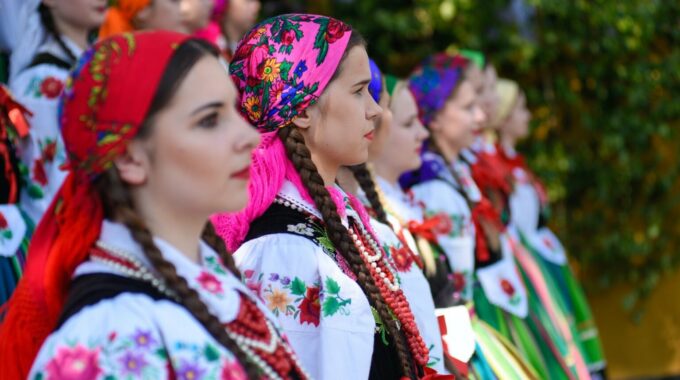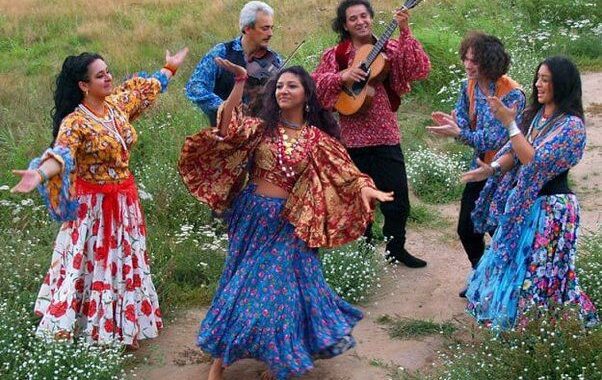
The Identity of Hungarian minority in Slovakia
Another article from the series of Digital Activism is about cultural identity of Hungarian minority in Slovakia. Article was created by Krisztina Nagy Mészáros.
There are a total of 506 settlements in Slovakia, where the proportion of Hungarians exceeds 10%, of which 336 settlements with a Hungarian majority. However, most of these settlements are villages with a small population, and only in 12 cities the proportion of Hungarians exceeds 50%.
59.3% of Hungarians live in villages with less than five thousand inhabitants.
When we talk about identity in recent years, especially after accession to the European Union, we mostly discuss the issue of national self-knowledge.
The development of self-identity is directly related to the metamorphoses of self-knowledge, attitudes and attitudes that define people today, one might say, addicts. (Alaban 2016)
The formation of national identity is also a factor strengthening the stability and balance of the whole personality, since the need for self-classification motivates an individual to belong to a nation. The “experience of belonging” evokes self-confidence, security, and positive feelings in us, and lack of them can result in emptiness and insecurity (Peter, 2011).
In addition, it is important to say that we and our identity are determined by several factors. Villages, cities and regions were shaped in their own image by the people who lived there, and a cultural, social and economic world was built on that natural space. ( Lelkes, 2019) So where we live determines our identity.
In Slovakia, the issue of research on national identity is particularly important in the case of Hungarian minorities in Slovakia, as the number of ethnic Hungarians has decreased enormously over the last three decades. Mainly due to assimilation processes, as stated by the Hungarian demographer from Slovakia László Gyurgyík in 2009: assimilation processes determine the development of the number of Hungarians in Slovakia to a greater extent than natural processes of population movement.
The first major period in the history of Hungarians in Slovakia is the history of 20 years spent in Czechoslovakia between the two wars. The Velvet Revolution, which broke out in Czechoslovakia on November 17, 1989, opened a new era in the history of Hungarians in Slovakia. From the very beginning, representatives of the Hungarian community took an active part in dismantling the socialist system and building a democratic society.
Factors shaping the decline in the number of Hungarians in Slovakia include the national identity of parents, mother tongue and its use, school language, environment, cultural consumption, individual and group experiences related to nationality, national perspectives and the effects of globalisation. Feelings, opinions, decisions about the present and future, as well as their justification, are fundamental factors in the formation of national identity.
One of the best-known experts on the national identity of Hungarians in Slovakia is Zsuzsanna Lampl, director of the Department of Sociological and Demographic Studies at the Institute for Minority Research at the Forum, who defined three types of national identity among Hungarians in Slovakia in the late nineties: solid Hungarian, middle and Slovak identity.
According to Zsuzsanna Lampl, there is a section on Hungarian national identity, with a solid Hungarian identity at one end and Slovak identity at the other. Transient identity fluctuates between these two points. Transient identity does not imply a dual identity. Dual national identity means that both national identities are equally important to the individual. Those who have a transitional identity have a Hungarian identity, but their identity components are different from the fixed Hungarian identity. The fact that someone is deified and conservative is not the result of a solid national identity, but of his general and political values.
65% of young people in South Slovakia speak predominantly Hungarian with their families, 24% use a mixture of Slovak and Hungarian and 7% communicate only in Slovak. All these data prove that in 18 years the national identity of Hungarians in Slovakia has changed significantly.
Maďarské inštitúcie na Slovensku (vrátane mimovládnych organizácií) zohrávajú rozhodujúcu úlohu pri zachovávaní maďarskej identity medzi maďarskou komunitou na Slovensku, čo môže zatraktívniť maďarskú identitu kvalitnými službami.
Hungarian institutions in Slovakia (including NGOs) play a crucial role in preserving Hungarian identity among the Hungarian community in Slovakia, which can make Hungarian identity more attractive with quality services.


Sources:
Alabán Ferenc A kulturális identitás metamorfózisai, Komárom, 2016
Gyurgyík L. (2014). A szlovákiai magyarság demográfiai folyamatai 1989-től 2011-ig –Különös tekintettel a 2001-től napjainkig tartó időszakra.Somorja: Fórum Kisebbségkutató Intézet.
Lampl Zs. (2008): Magyarok és szlovákok. Szociológiai tanulmányok nem csak az együttélésről. Fórum Kisebbségkutató Intézet. ( https://mek.oszk.hu/08000/08070/08070.pdf)
Lampl Zs. (2009) A nemzeti identitás, avagy a magyar márka megőrzése. http://www.kerekasztal.org/2015/02/lampl-zsuzsanna-a-nemzeti-identitas-avagy-a-magyar-marka-megorzese/
Lampl Zs. (2012): A szlovákiai magyarok szociológiája. Fórum Kisebbségkutató Intézet, SomorjaLampl Zs. (2019): A 2018-as szlovákiai magyar identitáskutatás elsődleges eredményei (http://forumszemle.eu/archiv/?szemle=2019-1)In: Fórum Társadalomtudományi Szemle 2019/1
Lelkes G.: A társadalmi-gazdasági területi különbségek hatásának vizsgálata az életmódra és a magyar kisebbség identitására, tanulmány, Dunaszerdahely, 2019
Unique] Delightful Hungarian Easter Traditions: From Cheeky to Tasty! (expat-press.com)



